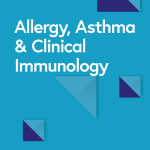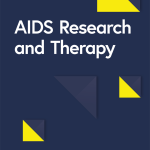Chen K, Shen Z, Gu W, Lyu Z, Qi X, Mu Y, Ning Y. Prevalence of obesity and associated complications in China: a cross-sectional, real-world study in 15.8 million adults. Diabetes Obes Metab. 2023;25:3390–9.
Amanat S, Ghahri S, Dianatinasab A, Fararouei M, Dianatinasab M. Exercise and Type 2 diabetes. Adv Exp Med Biol. 2020;1228:91–105.
Donnelly JE, Blair SN, Jakicic JM, Manore MM, Rankin JW, Smith BK. American College of Sports Medicine Position Stand. Appropriate physical activity intervention strategies for weight loss and prevention of weight regain for adults. Med Sci Sports Exerc. 2009;41:459–71.
García-Hermoso A, Carmona-López MI, Saavedra JM, Escalante Y. Physical exercise, detraining and lipid profile in obese children: a systematic review. Arch Argent Pediatr. 2014;112:519–25.
Del Vecchio FB, Coswig VS, Cabistany LD, Orcy RB, Gentil P. Effects of exercise cessation on adipose tissue physiological markers related to fat regain: a systematic review. SAGE Open Med 2020, 8.
Busetto L, Bettini S, Makaronidis J, Roberts CA, Halford JCG, Batterham RL. Mechanisms of weight regain. Eur J Intern Med. 2021;93:3–7.
Gentil P, Viana RB, Naves JP, Del Vecchio FB, Coswig V, Loenneke J, de Lira CAB. Is it time to Rethink Our Weight loss paradigms? Biology (Basel) 2020, 9.
Mazzucatto F, Higa TS, Fonseca-Alaniz MH, Evangelista FS. Reversal of metabolic adaptations induced by physical training after two weeks of physical detraining. Int J Clin Exp Med. 2014;7:2000–8.
Simsolo RB, Ong JM, Kern PA. The regulation of adipose tissue and muscle lipoprotein lipase in runners by detraining. J Clin Invest. 1993;92:2124–30.
Gripp F, Nava RC, Cassilhas RC, Esteves EA, Magalhães COD, Dias-Peixoto MF, de Castro Magalhães F, Amorim FT. HIIT is superior than MICT on cardiometabolic health during training and detraining. Eur J Appl Physiol. 2021;121:159–72.
Bae JY, Woo J, Kang S, Shin KO. Effects of detraining and retraining on muscle energy-sensing network and meteorin-like levels in obese mice. Lipids Health Dis. 2018;17:97.
Baiamonte BA, Kraemer RR, Chabreck CN, Reynolds ML, McCaleb KM, Shaheen GL, Hollander DB. Exercise-induced hypoalgesia: Pain tolerance, preference and tolerance for exercise intensity, and physiological correlates following dynamic circuit resistance exercise. J Sports Sci. 2017;35:1–7.
Yin M, Li H, Bai M, Liu H, Chen Z, Deng J, Deng S, Meng C, Vollaard NBJ, Little JP, Li Y. Is low-volume high-intensity interval training a time-efficient strategy to improve cardiometabolic health and body composition? A meta-analysis. Appl Physiol Nutr Metab 2023.
Thompson D, Karpe F, Lafontan M, Frayn K. Physical activity and exercise in the regulation of human adipose tissue physiology. Physiol Rev. 2012;92:157–91.
Duwaerts CC, Maher JJ. Macronutrients and the adipose-liver Axis in obesity and fatty liver. Cell Mol Gastroenterol Hepatol. 2019;7:749–61.
Kuo CH, Harris MB. Abdominal fat reducing outcome of exercise training: fat burning or hydrocarbon source redistribution? Can J Physiol Pharmacol. 2016;94:695–8.
Liu Y, Dong G, Zhao X, Huang Z, Li P, Zhang H. Post-exercise effects and Long-Term training adaptations of hormone sensitive lipase Lipolysis Induced by High-Intensity Interval Training in adipose tissue of mice. Front Physiol. 2020;11:535722.
Wang N, Liu Y, Ma Y, Wen D. High-intensity interval versus moderate-intensity continuous training: Superior metabolic benefits in diet-induced obesity mice. Life Sci. 2017;191:122–31.
Song W, Song C, Li L, Wang T, Hu J, Zhu L, Yue T. Lactobacillus alleviated obesity induced by high-fat diet in mice. J Food Sci. 2021;86:5439–51.
Bae JY, Woo J, Roh HT, Lee YH, Ko K, Kang S, Shin KO. The effects of detraining and training on adipose tissue lipid droplet in obese mice after chronic high-fat diet. Lipids Health Dis. 2017;16:13.
Liu Y, Li Y, Cheng B, Feng S, Zhu X, Chen W, Zhang H. Comparison of visceral fat lipolysis adaptation to high-intensity interval training in obesity-prone and obesity-resistant rats. Diabetol Metab Syndr. 2022;14:62.
Wisløff U, Helgerud J, Kemi OJ, Ellingsen O. Intensity-controlled treadmill running in rats: VO(2 max) and cardiac hypertrophy. Am J Physiol Heart Circ Physiol. 2001;280:H1301–1310.
Yin M, Li H, Bai M, Liu H, Chen Z, Deng J, Deng S, Meng C, Vollaard NBJ, Little JP, Li Y. Is low-volume high-intensity interval training a time-efficient strategy to improve cardiometabolic health and body composition? A meta-analysis. Appl Physiol Nutr Metab. 2024;49:273–92.
Wewege M, van den Berg R, Ward RE, Keech A. The effects of high-intensity interval training vs. moderate-intensity continuous training on body composition in overweight and obese adults: a systematic review and meta-analysis. Obes Rev. 2017;18:635–46.
Bellicha A, van Baak MA, Battista F, Beaulieu K, Blundell JE, Busetto L, Carraça EV, Dicker D, Encantado J, Ermolao A, et al. Effect of exercise training on weight loss, body composition changes, and weight maintenance in adults with overweight or obesity: an overview of 12 systematic reviews and 149 studies. Obes Rev. 2021;22(Suppl 4):e13256.
Chen X, He H, Xie K, Zhang L, Cao C. Effects of various exercise types on visceral adipose tissue in individuals with overweight and obesity: a systematic review and network meta-analysis of 84 randomized controlled trials. Obes Rev. 2024;25:e13666.
Lee S, Spector J, Reilly S. High-intensity interval training programme for obese youth (HIP4YOUTH): a pilot feasibility study. J Sports Sci. 2017;35:1–5.
Islam H, Townsend LK, Hazell TJ. Excess Postexercise Oxygen Consumption and Fat utilization following Submaximal continuous and supramaximal interval running. Res Q Exerc Sport. 2018;89:450–6.
Haghighi AH, Hajinia M, Askari R, Abbasian S, Goldfied G. Effect of high-intensity interval training and high-intensity resistance training on irisin and fibroblast growth factor 21 in men with overweight and obesity. Can J Physiol Pharmacol. 2022;100:937–44.
Mori M, Higuchi K, Sakurai A, Tabara Y, Miki T, Nose H. Genetic basis of inter-individual variability in the effects of exercise on the alleviation of lifestyle-related diseases. J Physiol. 2009;587:5577–84.
Maillard F, Pereira B, Boisseau N. Effect of High-Intensity Interval Training on Total, abdominal and visceral Fat Mass: a Meta-analysis. Sports Med. 2018;48:269–88.
Pirahanchi Y, Anoruo M, Sharma S. Biochemistry, Lipoprotein Lipase. StatPearls Treasure Island (FL) ineligible companies. Disclosure: McDamian Anoruo declares no relevant financial relationships with ineligible companies. Disclosure: Sandeep Sharma declares no relevant financial relationships with ineligible companies.: StatPearls Publishing Copyright © 2024. StatPearls Publishing LLC.; 2024.
Nikooie R, Samaneh S. Exercise-induced lactate accumulation regulates intramuscular triglyceride metabolism via transforming growth factor-β1 mediated pathways. Mol Cell Endocrinol. 2016;419:244–51.
Sertie RAL, Curi R, Oliveira AC, Andreotti S, Caminhotto RO, de Lima TM, Proença ARG, Reis GB, Lima FB. The mechanisms involved in the increased adiposity induced by interruption of regular physical exercise practice. Life Sci. 2019;222:103–11.
Saris WH, Schrauwen P. Substrate oxidation differences between high- and low-intensity exercise are compensated over 24 hours in obese men. Int J Obes Relat Metab Disord. 2004;28:759–65.
Boutcher SH. High-intensity intermittent exercise and fat loss. J Obes. 2011;2011:868305.
Sharma AM, Padwal R. Obesity is a sign – over-eating is a symptom: an aetiological framework for the assessment and management of obesity. Obes Rev. 2010;11:362–70.
Taylor J, Keating SE, Holland DJ, Coombes JS, Leveritt MD. The Chronic Effect of Interval Training on Energy Intake: a systematic review and Meta-analysis. J Obes. 2018;2018:6903208.
Ahmadizad S, Avansar AS, Ebrahim K, Avandi M, Ghasemikaram M. The effects of short-term high-intensity interval training vs. moderate-intensity continuous training on plasma levels of nesfatin-1 and inflammatory markers. Horm Mol Biol Clin Investig. 2015;21:165–73.
Kollias A, Skliros E, Stergiou GS, Leotsakos N, Saridi M, Garifallos D. Obesity and associated cardiovascular risk factors among schoolchildren in Greece: a cross-sectional study and review of the literature. J Pediatr Endocrinol Metab. 2011;24:929–38.
Gollisch KS, Brandauer J, Jessen N, Toyoda T, Nayer A, Hirshman MF, Goodyear LJ. Effects of exercise training on subcutaneous and visceral adipose tissue in normal- and high-fat diet-fed rats. Am J Physiol Endocrinol Metab. 2009;297:E495–504.
Sertie RA, Andreotti S, Proença AR, Campana AB, Lima-Salgado TM, Batista ML Jr., Seelaender MC, Curi R, Oliveira AC, Lima FB. Cessation of physical exercise changes metabolism and modifies the adipocyte cellularity of the periepididymal white adipose tissue in rats. J Appl Physiol (1985). 2013;115:394–402.
den Besten G, Bleeker A, Gerding A, van Eunen K, Havinga R, van Dijk TH, Oosterveer MH, Jonker JW, Groen AK, Reijngoud DJ, Bakker BM. Short-chain fatty acids protect Against High-Fat Diet-Induced obesity via a PPARγ-Dependent switch from Lipogenesis to Fat Oxidation. Diabetes. 2015;64:2398–408.
Walczak K, Stawski R, Perdas E, Brzezinska O, Kosielski P, Galczynski S, Budlewski T, Padula G, Nowak D. Circulating cell free DNA response to exhaustive exercise in average trained men with type I diabetes mellitus. Sci Rep. 2021;11:4639.
Yasari S, Paquette A, Charbonneau A, Gauthier MS, Savard R, Lavoie JM. Effects of ingesting a high-fat diet upon exercise-training cessation on fat accretion in the liver and adipose tissue of rats. Appl Physiol Nutr Metab. 2006;31:367–75.
Yasari S, Dufresne E, Prud’homme D, Lavoie JM. Effect of the detraining status on high-fat diet induced fat accumulation in the adipose tissue and liver in female rats. Physiol Behav. 2007;91:281–9.
Sertié RA, Andreotti S, Proença AR, Campaña AB, Lima FB. Fat gain with physical detraining is correlated with increased glucose transport and oxidation in periepididymal white adipose tissue in rats. Braz J Med Biol Res. 2015;48:650–3.
Agarwal D, Dange RB, Vila J, Otamendi AJ, Francis J. Detraining differentially preserved beneficial effects of exercise on hypertension: effects on blood pressure, cardiac function, brain inflammatory cytokines and oxidative stress. PLoS ONE. 2012;7:e52569.
Nikseresht M, Sadeghifard N, Agha-Alinejad H, Ebrahim K. Inflammatory markers and adipocytokine responses to exercise training and detraining in men who are obese. J Strength Cond Res. 2014;28:3399–410.
Paolucci EM, Loukov D, Bowdish DME, Heisz JJ. Exercise reduces depression and inflammation but intensity matters. Biol Psychol. 2018;133:79–84.
Moghadasi M, Mohebbi H, Rahmani-Nia F, Hassan-Nia S, Noroozi H, Pirooznia N. High-intensity endurance training improves adiponectin mRNA and plasma concentrations. Eur J Appl Physiol. 2012;112:1207–14.
Engin A. The definition and prevalence of obesity and metabolic syndrome. Adv Exp Med Biol. 2017;960:1–17.
Fatouros IG, Tournis S, Leontsini D, Jamurtas AZ, Sxina M, Thomakos P, Manousaki M, Douroudos I, Taxildaris K, Mitrakou A. Leptin and adiponectin responses in overweight inactive elderly following resistance training and detraining are intensity related. J Clin Endocrinol Metab. 2005;90:5970–7.
Zhang H, Tong TK, Kong Z, Shi Q, Liu Y, Nie J. Exercise training-induced visceral fat loss in obese women: the role of training intensity and modality. Scand J Med Sci Sports. 2021;31:30–43.
Børsheim E, Bahr R. Effect of exercise intensity, duration and mode on post-exercise oxygen consumption. Sports Med. 2003;33:1037–60.
Stephenson EJ, Lessard SJ, Rivas DA, Watt MJ, Yaspelkis BB 3rd, Koch LG, Britton SL, Hawley JA. Exercise training enhances white adipose tissue metabolism in rats selectively bred for low- or high-endurance running capacity. Am J Physiol Endocrinol Metab. 2013;305:E429–438.
Mirghani SJ, Yousefi MSJS. The effect of interval recovery periods during HIIT on liver enzymes and lipid profile in overweight women. Sports. 2015;30:147–54.
Shakoor H, Kizhakkayil J, Khalid M, Mahgoub A, Platat C. Effect of Moderate-Intense Training and detraining on glucose metabolism, lipid Profile, and liver enzymes in male Wistar rats: a preclinical Randomized Study. Nutrients 2023, 15.
Dinari Ghozhdi H, Heidarianpour A, Keshvari M, Tavassoli H. Exercise training and de-training effects on serum leptin and TNF-α in high fat induced diabetic rats. Diabetol Metab Syndr. 2021;13:57.
Nikseresht M, Hafezi Ahmadi MR, Hedayati M. Detraining-induced alterations in adipokines and cardiometabolic risk factors after nonlinear periodized resistance and aerobic interval training in obese men. Appl Physiol Nutr Metab. 2016;41:1018–25.
Wang Y, Xu D. Effects of aerobic exercise on lipids and lipoproteins. Lipids Health Dis. 2017;16:132.
Wood G, Murrell A, van der Touw T, Smart N. HIIT is not superior to MICT in altering blood lipids: a systematic review and meta-analysis. BMJ Open Sport Exerc Med. 2019;5:e000647.
Kodama S, Tanaka S, Saito K, Shu M, Sone Y, Onitake F, Suzuki E, Shimano H, Yamamoto S, Kondo K, et al. Effect of aerobic exercise training on serum levels of high-density lipoprotein cholesterol: a meta-analysis. Arch Intern Med. 2007;167:999–1008.
Callahan MJ, Parr EB, Snijders T, Conceição MS, Radford BE, Timmins RG, Devlin BL, Hawley JA, Camera DM. Skeletal muscle adaptive responses to different types of short-term Exercise Training and Detraining in Middle-Age men. Med Sci Sports Exerc. 2021;53:2023–36.





Add Comment